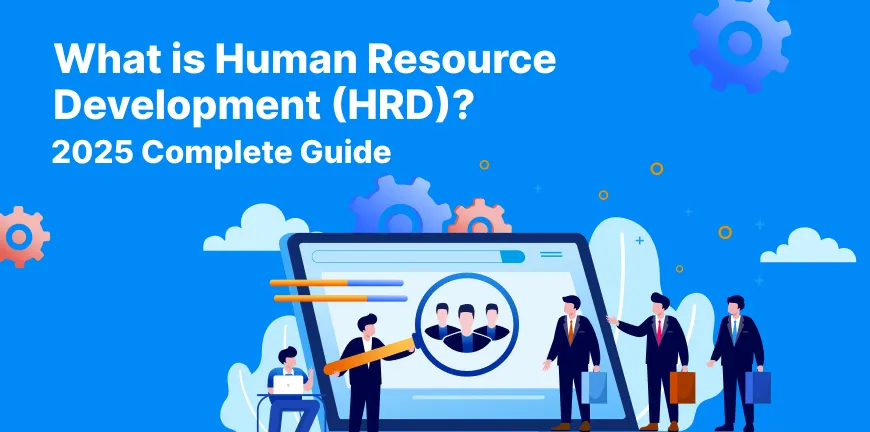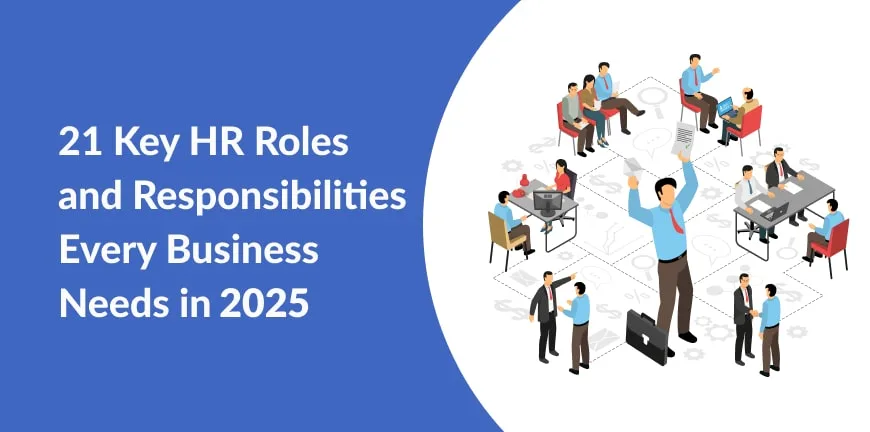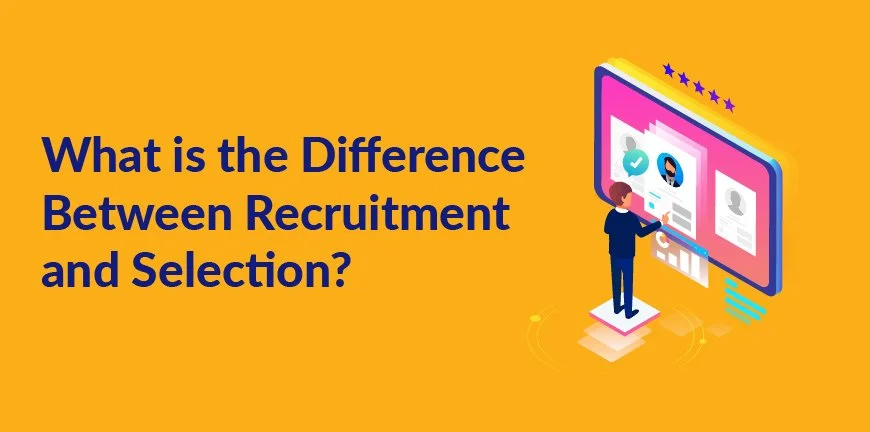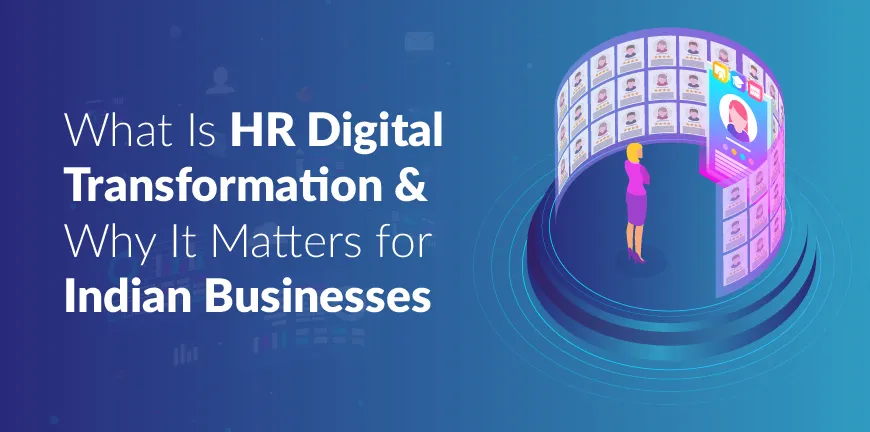
What is Recruitment Life Cycle? A Complete Guide
12/10/2025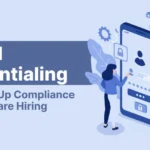
Digital Credentialing: Speeding Up Compliance in Healthcare Hiring
13/10/2025- What is Human Resource Development (HRD)?
- What are the Critical Elements of Human Resource Development?
- What are the Objectives of HRD in an Organization?
- What is the Significance of Human Resource Development in 2025?
- What are the Types of HRD Models?
- How do Organizations and Employees Benefit from HRD?
- What are the Challenges in Implementing HRD?
- What Strategies are Required to Enhance Human Resource Development in 2025?
- What are the key Differences Between Human Resource Development and Human Resource Management?
- What are the Future Trends of Human Resource Development?
- Key Takeaways
- Frequently Asked Questions
Gary Becker, Nobel Laureate in Economics, said, “The basic resource in any company is the people. Their productivity depends on the way they are trained, motivated, and treated.”
The new world is a space where innovation is the propeller of the progress of organizations, and the way to pivot depends on how adaptable you are as a firm. If you want to beat your competitors, you must concentrate on your teams, who shape your business. Technology or products are crucial, but not without people working in organizations. This is where Human Resource Development (HRD) comes into play, designing intelligent plans to empower individuals, engineer organizational development, and facilitate social changes.
The definition of HRD has metamorphosed, and it is not just about initiating training programs or focusing on performance incentives. It is about the holistic development of individuals and organizations, fostering knowledge and understanding so that they can combat present and future challenges.
In this comprehensive guide, let us walk you through the meaning, importance, challenges, trends, etc, of HRD.
What is Human Resource Development (HRD)?
HRD is a well-designed process that caters to the development of an organization’s manpower and the organization itself. The aim is to continuously nurture and advance the knowledge, abilities, and qualities of individuals in an organization to accentuate the organization’s and individual performances and attain business objectives.
What are the Critical Elements of Human Resource Development?
The human resource development process entails a few vital components that help build a better workforce and enhance organizational progress.
1. Training and Development
To unlock the true potential of individuals in an organization, there are several training programs structured to enhance the skills and talent of employees, including on-the-job training, technical skill development, soft skills training sessions, orientations, and many more.
2. Organizational Development
The improvement of the overall effectiveness of an organization depends on the developmental programs designed by the HR department. The programs include transformation in management initiatives, team building practices, strategies to enhance processes, cultural development programs, etc.
3. Career Development
Another significant component of HRD is to position individual career objectives to the requirements of an organization and future needs. This element entails programs like mentorship sessions, career counselling, and planning, future leadership planning, etc.
4. Performance Management
The objective of performance management is to analyse and enhance the performance of employees. The initiatives include setting goals, appraisals, rewards, and acknowledgement, performance advancement plans, coaching, feedback, etc.
5. Leadership and Management Development
It is essential to have robust leadership that can drive an organization to the pinnacle of success. To ready future leaders and managers, certain steps need to be implemented, like executive coaching, leadership training program models, workshops on strategic decision making, training for conflict resolution, etc.
6. Knowledge Flow Management
The purpose of this component is to ensure that there is continuity in knowledge sharing, a constant learning landscape, and the handling of organizational knowledge. It includes practices like learning management systems, innovation centres, knowledge sharing platforms, etc.
7. Talent Management
Drawing, developing, and retaining top talent is a vital exercise, and to make it a success, here are a few exercises, like manpower planning, employer engagement methods, development of high-performing employees, etc.
8. Employee Welfare Management
The motive is to create a safe space for employees and cater to their well-being. The steps include flexible work arrangements, guidance and counselling sessions, workshops related to stress management, etc.
What are the Objectives of HRD in an Organization?
Let us now look at some of the core objectives of HRD in organizations:
1. Accentuate Employee Talent and Abilities
The motive of HRD is to develop employees so that they are prepared to take on existing challenges and excel in future roles. Skills like interpersonal, technical, and leadership are honed to the T.
2. Fuel Continuous Learning and Growth
The HRD systems facilitate an environment of continuous learning and development. They encourage the manpower and impart the knowledge of the latest trends, technology, and emerging practices.
3. Enhance Performance and Efficiency
The aim is to enable employees to defeat performance challenges and advance towards success. It uplifts the spirit of teams and encourages them through methods like training, guidance, and feedback systems.
4. Power Personal and Professional Development
HRD offers full support to employees and motivates them to attain their goals. They are empowered personally and professionally through programs like mentoring, cross-training, etc.
5. Build Long-Term Organizational Strength
HRD supports organizations with competent and potential individuals who drive the company’s success and enable a sustainable and resilient future.
6. Recognize and Nurture Future Leaders
Prepares promising and highly skilled individuals within the organization to develop and fill critical executive roles.
Use Case – The Tata Management Training Centre (India) is renowned for its annual leadership and management development programs, which implement and execute continuous learning, leadership development, and knowledge management initiatives.
What is the Significance of Human Resource Development in 2025?
HRD in 2025 is a necessity that has evolved over the years and is instrumental in driving the growth of organizations and enabling them to thrive. Let us understand why it is important:
1. Modern Tech Adaptation
The advent of AI and advanced technologies has created havoc in various industries, and the sooner businesses adopt these technologies better their chances of being updated and relevant. HRD assists organizations in helping employees acquire niche skills and also enables them to become digitally fluent by integrating the latest tools and platforms.
According to reports, 58% of Learning & Development leaders say that skill gaps & slow AI adoption are their biggest challenges.
2. Bridging Skill Gaps
There is a wide, persistent gap when it comes to the talent available and the actual skills required. Robust HRD systems can help close these gaps through continuous career development and training programs. They focus on niche sectors where the gaps are prominent.
As per reports, 88% of India’s workforce is involved in low-competency occupations, with over two-thirds of vocational training focused on just five sectors, indicating a requirement for broader skill development across industries.
3. Fostering DEI Initiatives
The demand for incorporating an inclusive and diverse culture in organizations is the new norm, and HRD today focuses on designing inclusive training sessions. Craft equitable and unbiased programs that cater to diverse teams who set examples domestically and globally.
4. Prepping Future Work Systems
With flexible work models gaining momentum and work-life balance being of utmost importance, the functions of human resource development ensure that employees are prepared to face and flourish in flexible work landscapes. They focus on collaborating digitally and on virtual leadership knowledge.
5. Promoting Staff Engagement and Retention
HRD crafts initiatives and frameworks to make employees feel comfortable and content with their jobs and the work environment. A culture of continuous learning and growth reflects that a company is making an effort to invest in people.
What are the Types of HRD Models?
| HRD Model | Focus | Examples |
| Government-Led | National Skill Development | Skill India, NSDM |
| Corporate HRD | Organizational talent | TCS, Infosys, Mahindra |
| Educational | Student employability | IITs, NITTTR |
| Integrated (Pareek Model) | Holistic HRD systems | Used in PSUs, large firms |
| NGO-Based | Grassroots skilling | SEWA, Pratham |
| PSU HRD | Structured internal growth | SAIL, ONGC, BHEL |
| Sectoral HRD | Industry-specific skills | ASDC, TSSC, HSSC |
How do Organizations and Employees Benefit from HRD?
Here are a few benefits of human resource development:
For Organizations:
- Accelerated Employee Performance- Employees who are well-trained and coached are confident and contribute to the growth and productivity of organizations.
- Improved Agility and Innovation- Organizations that facilitate a culture of constant knowledge acquisition are always alert, innovative, and respond quickly to the evolving markets.
- Enhanced Organizational Values- HRD designs programs and structures for companies that enhance the culture and values of the organization and make it a positive environment.
- Better Employee Retention- HRD enables firms to invest in employee growth, which in turn provides a happy and content manpower that stays long term.
For Employees
- Increased Skill Development and Career Progress- HRD ensures that employees are equipped with new skills and innovations that enable them to move forward in their careers.
- Enhanced Job Satisfaction and Encouragement- Employees feel wanted and acknowledged if a proper developmental plan is formulated. They feel valued and satisfied, wanting to contribute more.
- Focus on Personal Growth- An HRD drives organizations to develop programs like skill development, collaboration, and communication training, etc, for the betterment of employees that focus on their personal and professional well-being.
- Enhanced Job Prospects and Security- The constant upgradation of skills and knowledge nurtures employees to be valuable and adaptable to changing market scenes.
What are the Challenges in Implementing HRD?
HRD is a phenomenon that helps organizations grow, but it brings with it a slew of challenges. Let us check out some of the challenges:
1. Dearth of Top Management Support- Senior management in organizations might be unsupportive of the HRD initiatives, which could result in a lack of funds and influence required for the initiatives to succeed.
2. Technology Limitations- Advanced technology is taking over sectors, and old and outdated systems can pose as obstructions for HRD to help organizations integrate modern technology. AI tools and systems require robust infrastructure and digital fluency.
3. Cultural Constraints- Certain organizations might have cultures that might not encourage learning and innovation, crucial elements for HRD to succeed. Cultural differences in multinational enterprises might adversely affect HRD initiatives.
4. Limited Qualified HRD Expertise- There is a need for highly skilled and well-trained HRD professionals to execute initiatives efficiently. They must have expertise in aspects like company development, performance enhancement, etc.
5. Vague HRD Plans or Objectives- Erratic HRD strategies that do not cater to business goals might hamper the entire process. HRD structures must be carefully merged into wider business perspectives.
What Strategies are Required to Enhance Human Resource Development in 2025?
1. Sync HRD with Corporate objectives.
HR managers must ensure that HRD initiatives are in tandem with long-term organizational goals. Managers must design structures that indicate the kind of skills organizations might require in the future.
2. Embrace Skills-centric Approach
HR managers must focus on skill-based development, a shift from development that is job-oriented. Emphasis must be given to soft skills like communication, collaboration, along with technical skills.
3. Utilize AI and Learning Tech
The incorporation of AI tools and platforms into the HRD structure is the new norm. AI-backed systems and platforms must be implemented to personalize learning paths and boost many more initiatives.
4. Adopt Flexible Work Models
With Hybrid models in demand, HR managers must formulate training frameworks and sessions that align with the flexible work models. Digital inclusion is essential to allow professionals who are not technical experts to learn new concepts.
5. Empower Employees to Control Growth
HR managers must develop employees to take charge of their own learning graph by offering an array of resources, including learning plans, frameworks, knowledge hubs, etc.
What are the key Differences Between Human Resource Development and Human Resource Management?
| Aspect | Human Resource Development (HRD) | Human Resource Management (HRM) |
| Focus | Employee progress, learning, and career growth | Overall manpower management |
| Primary Objective | Accelerate employee skills, knowledge, and capabilities | Ensure impactful utilization and administration of HR |
| Key Activities | Training and development
Career planning Coaching and mentoring Succession planning |
Recruitment and selection
Compensation and benefits Performance management -Compliance |
| Time Perspective | Futuristic and long-term goals aiming to develop continuously | Focus is on operations mostly, and it is short-term or mid-term. |
| Strategic Participation | Prepares manpower for future risks and leadership roles | Handles the current manpower to cater to organizational efficiency |
| Involvement Stage | Post-recruitment (focuses on improving those already hired) | Starts from hiring and continues through the employment lifecycle |
| Nature | Developmental | Administrative and managerial |
| Tools Used | Learning Management Systems
– Career Development Plans |
– HR Information Systems – Payroll and Attendance Systems |
| Outcome | Improved employee performance, engagement, and retention | Efficient workforce management and policy implementation |
What are the Future Trends of Human Resource Development?
- Integration of AI Leadership in HR Systems- The rise of AI in industries is slowly being reflected in the leadership level appointments, where senior leaders are managing AI. But that is not enough; they need to incorporate AI-driven strategies into business planning. This AI transformation must be supported by HR, who will create relevant skills, placing themselves as a partner in this transformative process.
- Employee-Oriented Work Culture- One of the most important trends that will influence HRD is that the focus will be on employee welfare, their goals, and needs. Career development will be taken care of by the teams and organizations.
- Focus on People Skills- Skills that have emotional significance are on the rise, and they are equally important as technical skills, so HR managers need to focus on building teams with skills like communication, empathy, etc.
- Justifiable and Ambitious Approach- Professionals will be prepared by HRD to cater to roles that are goal-oriented. Individuals will gain expertise in roles catering to ESG objectives.
- Data-Powered HRD- The utilization of data and people analytics is set to rule HRD systems. The technology will assess and measure how effective the learning is and its impact on businesses. Data will help power training modules, career growth planning, etc.
Key Takeaways
- HRD evolves into holistic and strategic functions
- HRD is vital for future preparedness and the digital revolution
- Employee-focused development is the new norm
- HRD and HRM are Complementary but Distinct
- Future of HRD is tech-driven and data-backed
Frequently Asked Questions
1. What is the main role of Human Resource Development?
The most important role of HRD is to nurture skilled manpower by accelerating their knowledge, skills, and potential to cater to the broader goals of companies.
2. How is HRD different from HRM?
HRD is a more specific way of functioning where they work on enhancing employee knowledge and skills, while HRM is a broader function where employees are managed for effective operations.
3. What are the key components of HRD?
The key components of HRD include company development, career growth, individual growth, performance management, etc.
4. Why is HRD important in 2025?
HRD is crucial in 2025 as it cultivates a skilled workforce, accentuates adaptability to rapid change, facilitates employee engagement and retention, and aligns individual and company goals to attain sustained business success.
5. What are common challenges in HRD?
The common challenges in HRD entail managing and retaining manpower, adopting AI, managing flexible work models, ensuring regulatory compliance, etc.
6. How can HRD improve employee performance?
HRD can improve employee performance by designing structured career plans, providing comprehensive training sessions, coaching, creating a positive work environment, etc.
7. What are the latest trends in Human Resource Development?
Some of the latest trends of HRD in 2025 include AI integrations, focus on personalized employee welfare, changing strategies with flexible work models, data analytics, upskilling, and reskilling etc.
Contact Us For Business Enquiry

Rajkumar Shanmugam
Rajkumar Shanmugam is the Head of HR at ALP Consulting, bringing over 19 years of comprehensive HR leadership experience across India and international markets. His expertise spans talent acquisition, employee relations, performance management, compliance, and HR transformation. Rajkumar has a proven track record of driving people-centric initiatives, enhancing workplace culture, and aligning HR strategy with business goals. With extensive experience in US staffing operations and global mobility, he continues to lead organizational excellence through innovation and employee engagement.

